There are dozens of types of strollers but a fairly new option is the all-terrain stroller. These look a lot like jogging strollers – and sometimes are even called “all-terrain jogging strollers” – but there are actually some major differences between the two.
Here’s the difference between jogging and all-terrain strollers and also which one makes more sense to get.
Also read: The Best All-Terrain Strollers for Hiking
Quick Answer:
- If you mostly hike and won’t go at high speeds: Choose an all-terrain stroller with two large back wheels and a smaller 360 front wheel. The tires should be air-filled but you can get away with using foam-filled tires.
- If you mostly jog or run: Get a jogging stroller with a fixed front wheel. The wheels can be the same size. If you are mostly running on smooth roads, you can get away with smaller 12” wheels and foam-filled tires (but 16” wheels and air-filled tires are still better).
- If you jog on bumpy surfaces and go hiking: Get an all-terrain stroller with a lockable front wheel, air-filled tires and a really good suspension system. A budget stroller probably won’t be good enough for both needs!
Can You Use a Jogging Stroller for Hiking?
A lot of jogging strollers can be used hiking. Likewise, a lot of all-terrain strollers can also be used for jogging. However, this isn’t always the case. Consumer Reports specifically states that,
“All-terrain [strollers] are often mistaken for jogging or running strollers, but should not be used for running unless the user’s manual specifically says so.”
If you want a stroller which can go off-road hiking and also handle at high speeds, it will need to have features like:
- Air-filled tires
- Large wheels
- Lockable front wheel (which is reliable!)
- Fantastic suspension system
For example, the Thule Urban Glide and BOB Alterrain Pro can be used for both jogging and hiking.
Features of Jogging Strollers vs. All-Terrain Strollers
There is a lot of cross over between the features of jogging and all-terrain strollers. Here are the main ones and how they can differ.
Larger Wheels
Some jogging strollers have large (16″) back wheels but this is absolutely mandatory on all-terrain strollers. The larger wheel means they are better able to handle rough terrain. With smaller wheels, the ride will be very bumpy for your child. For older children, this is uncomfortable. For infants, a bumpy ride can be downright unsafe. On top of that, it takes a LOT more energy to push a stroller with smaller wheels.
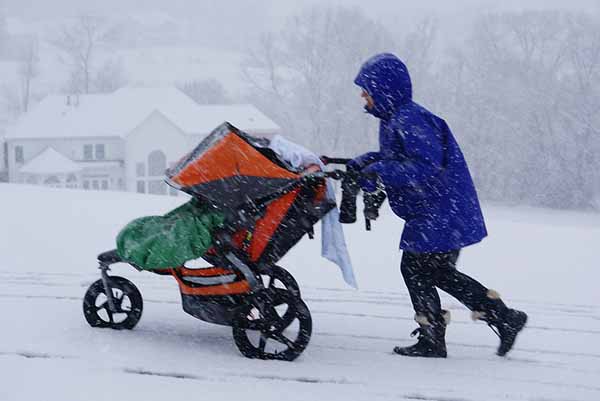
Notice how easy it is to push the stroller (BOB Revolution) over snow because of its large wheels. It’s even a double stroller and still going smoothly!
Wheel Design
Both jogging and all-terrain strollers will have three wheels. The three-wheel construction (triangle) is more stable than four wheels. It also makes strollers easier to handle and less bumpy for the passenger.
However, all-terrain strollers will have two larger back wheels and a smaller front wheel. Jogging strollers may have three equal-sized wheels.
Why larger back wheels and smaller front wheel?
You’ll notice that a lot of other vehicles designed for off-road use (such as tractors) also have larger back wheels. There is actually a lot of physics behind this construction.
- Less energy to push: Because the wheels with the greater surface area are closer to you, you don’t need to exert the same amount of energy to push. This is important when going over rough terrain or uphill!
- Less likely to get stuck: Pressure is distributed over surface area. Large wheels have more surface area so there will be less pressure on them. This makes them less likely to get stuck in muddy or sandy terrain. If the front wheel gets stuck, you’ll be able to push it out easier.
- Load distribution: The weight of a stroller is in the front (your child). The larger wheels help distribute the weight to balance out the heavy front. Otherwise you would have too much weight at the front and your stroller would get stuck in mud and be harder to maneuver.
- Easier to turn: Because there is more grip in the back axis, the stroller will be easier to turn.
- Less likely to flip over: The increased grip in the back of the stroller also means it can handle sharper curves without wobbling or flipping over.
In short, the large back wheel/small front wheel configuration handles better on bad terrain while still being maneuverable. By contrast, equally-sized wheels increases traction, which is useful when jogging at high speeds.
Joggers Have Fixed Front Wheels
The faster a stroller goes, the more the front wheels will wobble. They can wobble so much that the stroller starts to go out of control, making it hard to steer and potentially veering off the road. To prevent this wobbling, jogging strollers have a fixed front wheel. The downside is that you they are harder to maneuver: you have to literally push down to lift the front wheel if you want to turn. Speaking from experience, this can cause a lot of wrist stress!
By contrast, you generally do not want to have a fixed wheel on a hiking stroller: it would be good difficult to maneuver the stroller around obstacles and curves.
A solution: Lockable Front Wheel
As a compromise, many jogging strollers have a front wheel which can be locked or unlocked. This makes them suitable for jogging but still allows for maneuverability.
There is some debate as to whether lockable front wheels are safe for jogging. Some parents say that the lock can fail – which would be dangerous if at high speeds. Also, there is the hassle of adjusting the wheel and making sure it stays straight.
The bottom line? If you go at very high speeds (such as rollerblading), you should choose a fixed front wheel. OR be ready to pay more for a brand which has reliable locks on the front wheel. Cheap strollers probably aren’t going to cut it.
Tire Width and Tread
Compared to jogging strollers, all-terrain strollers have wider tires with deeper tread. This allows them to better handle rough terrain without making it too bumpy for your child. By contrast, jogging strollers need thinner tires with less tread so you won’t be slowed down by the stroller.
For example: The BOB Alterrain stroller (first picture) has front tires which are 2.25” wide and have lots of deep tread. Their Ironman jogger (second picture) has front tires which are 1.5” wide and not as much tread.
Air-Filled Tires
Most jogging strollers and all-terrain strollers have air-filled tires. However, they are a must-have feature if you are going on bumpy terrain. Otherwise the journey might be too bumpy for your child.
As one mom said after trying air tires:
“One time I was walking with my new Graco Trekko (rubber tires) next to a mama friend with and old Schwinn jogger with air tires. We switched so she could check out the Graco, and even though her stroller was old, it felt as if it were floating over the sidewalk! Air tires do make a difference.”
Tip: Good air tires should be able to handle jagged rocks, thorns, etc. without puncturing. If you are getting flats frequently, it’s probably because you are using cheap tubes. Buy better tubes and you’ll probably never get a flat again. You can also put bicycle goo in the tires to prevent flats.
Image credits:
“Power Stroller” (CC BY-NC-ND 2.0) by Georgia National Guard,
“Day 035 – Photo365 – Cool” (CC BY-SA 2.0) by UnknownNet Photography,
“The snow really picks up as we get towar” (CC BY-SA 2.0) by dionhinchcliffe,
Resources:
https://www.sacrewell.org.uk/news/why-do-tractors-have-smaller-wheels-at-the-front-and-larger-wheels-at-the-back/
https://farmingbase.com/why-do-tractors-have-smaller-front-wheels-and-large-rear-wheels/


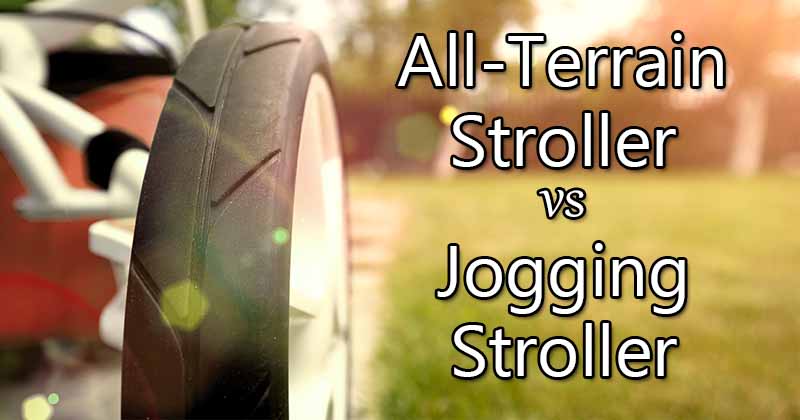
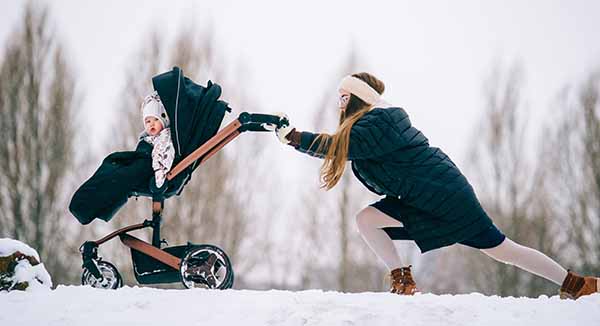
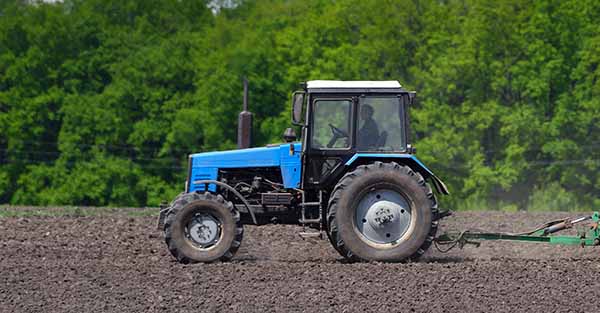
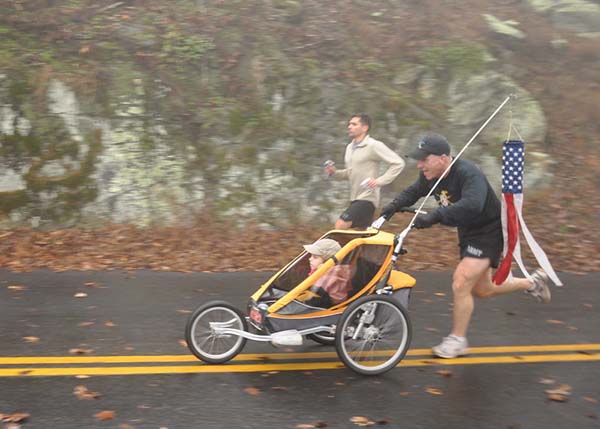
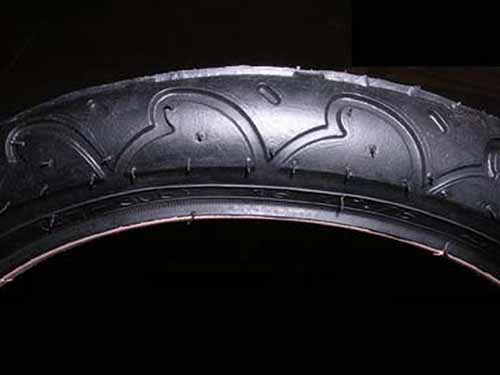
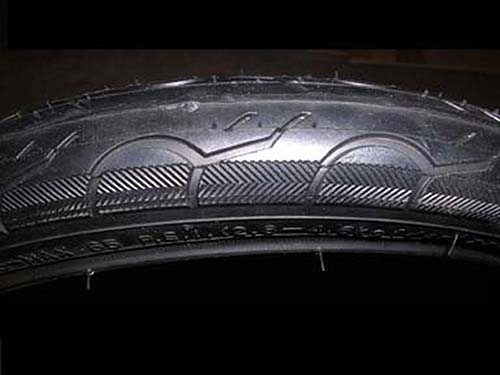
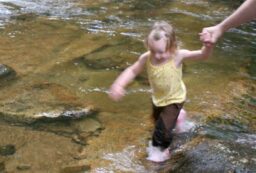
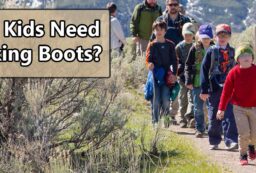
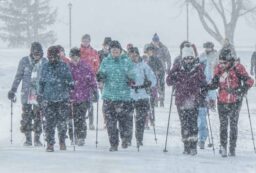







Post your comments